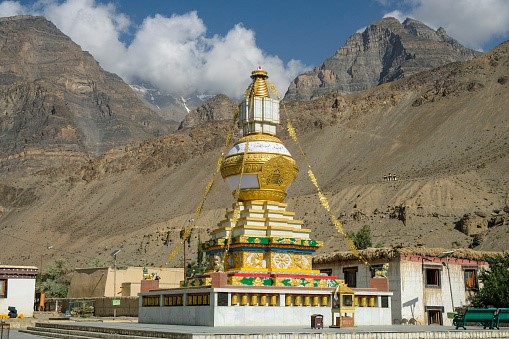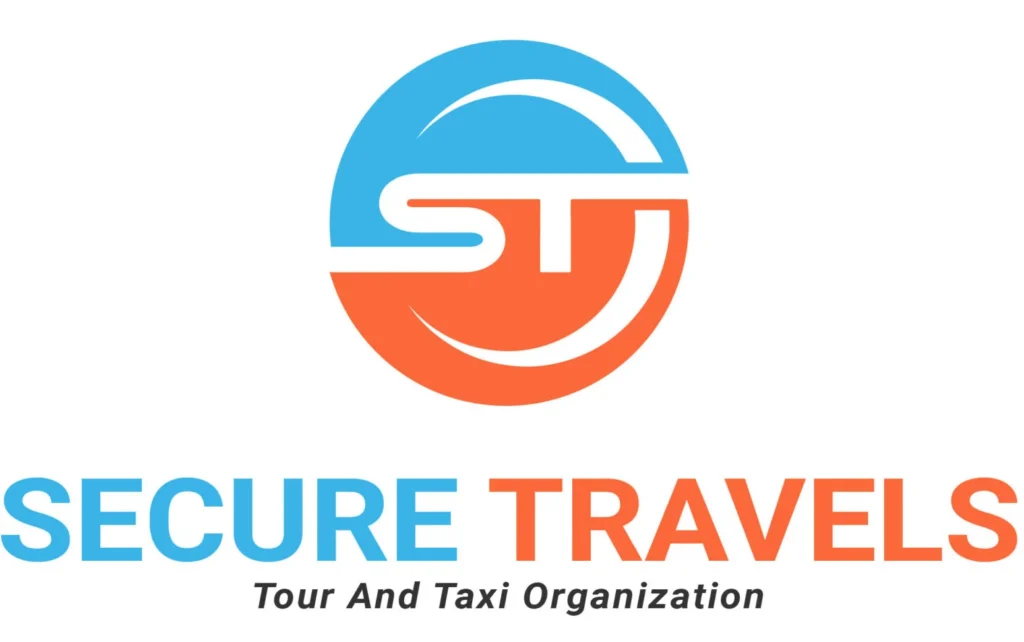Spiti Valley
-
Difficulty
Difficult -
Duration
10 Days -
Maximum Altitude
14, 931 ft -
Base Camp
Manali -
Best Time To visit
April, May, Sep, Oct
- 10 Days
- Trekking 0 Km
Pick Up Point: Delhi
Payment Mode: Cash, UPI, Bank Transfer
Trek Info
- Region :- HImachal Pradesh
- Snow: December to March
- Trekking Km: 0 Kms
Need Help?
Call us on 9045089649
Far away from the crowd in the silent bed of the Himalaya lying in peace where the tourist are always welcome “SPITI VALLEY” (Himachal Pradesh) You can reach out spiti from many means of transportation. If you are from Dehradun, you can follow the road to Shimla, where you can find some traffic, which is obvious, and then Kalpa to Kaza (the capital of Himachal Pradesh), leading straight to Spiti. Do take a guide along the way. Spiti lies between Tibet and India.
There are two ways to reach spiti valley one is from Manali and the other one is from Kinnaur. But is winters i.e. from December to March the Way from Manali is closed due to heavy snowfall because of kunzum pass which is at a altitude of 4700m above sea level.
Once you reach spiti valley, let me introduce you to the mountain food “chol and mutton” and Himachali Dham a famous dish.
Tourist also stay at Kalpa to see Kailash mountain and parvati Peak; it’s a beautiful range The best part about Kalpa is that the mountains, the Himalayas, are just in front of you. They are high in altitude, and face-to-face with you, they are so huge. After Shimla district ends, a new path starts known as Kinnaur, the way to Spiti. There are mountain cuts on that route, and the roads are fabulous. Till Kinnaur, there are safety railings on the edge of the road constructed by the Himachal government. It takes almost 2 hours from Tapri to reach Kalpa, which is at an altitude of about 2900 m in the Himalayan range. Pin Valley and Reckong Peo are very famous in Kalpa. There is a Kailash Range, also known as Pir Pranjals, and the maximum altitude is 6050–6500 m.

- Pin Valley and Reckong Peo are very famous in Kalpa.
- There is a Kailash Range, also known as Pir Pranjals, and the maximum altitude is 6050–6500 m.
- From pooh you have to climb a whole mountain and change the altitude of almost 1500 meters and then you can stop at Kangri Dham where you can stop and have “Rajma-Rice” which is again very famous go to go lunch.
- Once you reach Tabo, the Tabo Monastery it has great culture its one of the oldest monasteries in India and the oldest functioning monastery. It is one of the most cultural heritage point of spiti as a valley you can fine years old statues.
- Tabo religious community is arranged in the town of Tabo of Spiti valley, Dist. Lahaul-Spiti (H.P.) at 3280 meters elevation close to the Tibet line, only noth of sutluj River.
- Majestic Buddha Sitting Right There in between the Great Himalayas. Come to the Lanza Valley and Definitely Visit and pay Respect and Take your Blessings from Lord Buddha.

Day 1: Delhi to Manali
The Spiti Valley Bike Trip expedition begins in Delhi, where our team picks you up at a pick-up point and takes you to the Valley of the Manari Gods. The drive from Delhi to Manari takes about 1112 hours. With a passion and passion for the Spiti Valley Bike Tour, it’s definitely fun. When driving at night, Volvo will take care of your comfort issues.
Day 2: Arrive at Manari Local City Tour
We arrive in Manari early in the morning and settle down in the room for a break. The bike will then be passed to you with complete information on the routes, maps, destinations and regulations provided by our team. Now you are ready to break through the local Manari in the city. Here, the fascinating natural beauty is mixed with historical and mythical elements. Hadimba Temple, Tibetan Monastery, Sanctuary, Old Manali (swaying eucalyptus trees, charming streets, cute little restaurants, small fox markets, cafes serving your favorite continental dishes), Manumaharishi Temple are all worth visiting (It is the only temple in India. Rishimanu, named after the city). After enjoying delicious local Manari cuisine, spend the night at the hotel.
Day 3: From Manari to Lampuru
After a delicious breakfast, we travel a distance of 197 km, with all the modern conveniences and can be used as a stopover before a long journey to Lahore Spiti. Lampuru is the center of small and medium-sized enterprises. The Sutlej River is lower than its surroundings. The first day of your trip from Manari ends with your arrival at Lampuru. Spend the night in a tent in a tent under a dazzling star-studded sky in an exhilarating campfire.
Day 4: From Lampuru to Chitokuru
After a delicious breakfast, head to Chitkul, the crown of Kinnaur. If you drive to the Chitokul Valley, the Baspa River is on your right. On the way, you will pass the village of Lac Cham. There are many campgrounds in the apple orchards along the Baspa River. The largest village in the Baspa Valley of Himachal Pradesh, at an altitude of 3450 meters (11,345 feet). It is the last inhabited village near the border between India and China. This is the end of the road in India. When you arrive at Chitkul, spend the night in your tent.
Day 5: Chitkul to Tabo
We begin riding towards Tabo, a little town on the banks of the Spiti River in the Lahaul and Spiti area of Himachal Pradesh, India. Tabo is a customary Himalayan town in Himachal Pradesh, India, situated on the Rekong Peo and Kaza course in the Lahaul-Spiti locale. At a rise of 10,000 feet above ocean level, Tabo is a little town on the banks of the Spiti River.
Day 6: Tabo to Kaza
In the first part of the day, we’ll cycle to Kaza and afterward into the Spiti Valleys. Kaza is a notable and huge town in Himachal Pradesh’s Lahaul and Spiti district, situated in the Spiti Valley. Kaza, situated on an edge 11,980 feet above ocean level, is a genuinely lovely site to visit. High mountain edges encompass Kaza on all sides. The people group is encircled by lavish vegetation and is home to a rich exhibit of verdure. Kaza Kaza Kaza An excursion manual for Kaz would be deficient without underscoring its regular excellence and tranquil nature. There are two bits to the town: antiquated and new.
Day 7: Kaza Excursion Day to Key religious community, Langza, Komic, Hikkim towns
After breakfast, we’ll go on a visit through Kaza’s amazing regular quality. We’ll go to the Key Gompa Monastery and Langza, a little provincial settlement in the Spiti Valley tucked between the mountains in a bowl-formed area. This town is situated in the Himachal Pradesh region of Lahaul and Spiti at a height of 14,500 feet above ocean level. Langza is otherwise called one of the world’s most elevated motorable-street settlements. Also, Komic is the world’s biggest town with a street framework. Hikkim is a town in northern India’s Himachal Pradesh’s Lahaul and Spiti region. It is exceptionally near the Kaza area. It is one of India’s biggest all year occupied places, with homes going from 4330 to 4400 meters
Day 8: Kaza to Chandratal
From Kaza, we’ll ride to Chandratal, where a motorable street prompts a parking area 2 kilometers before the lake. The ‘Pool of the Moon,’ otherwise called Chandra Tal, is situated in Himachal Pradesh’s Lahaul and Spiti region in the Spiti region. The lake’s name comes from its sickle shape. It is situated at a level of about 4,300 meters in the Himalayas (14,100 feet). Mountains on one side ignore the lake, while a dazzling cirque on the other gives a vista. Chandra Tal offers a delightful dawn vista (after dusk).
Day 9: Chandratal to Manali to Delhi
After breakfast, we begin riding back to Manali promptly in the first part of the day. Now is the ideal time to express farewell to your dearest friend, the bicycle that has went with you on this hazardous experience, when you show up in Manali. Accordingly, cruisers would become outdated. We’ll be headed to Delhi in the evening on board a Volvo transport.
Day 10: Delhi
We’ll show up in Delhi around 10 a.m., and you’ll leave with a gathering of great companions and an extra pack brimming with trying, thrilling encounters to esteem for a lifetime.
By Air:- Delhi has an airport with connections to all over India.
By Train:- There are many trains from all over India every hour.
By Bus:- If a flight is too expensive and a train is full (which they usually are), you can take a government bus also.
Inclusions :-
1. Accommodation (guest house, camping).
2. Meals while on trek (Veg. & Egg).
3. Trek equipments: sleeping bag, mattress, tent (triple sharing), kitchen & dining tent, toilet tent, utensils, and crampons (if required).
4. All necessary permits and entry fees.
5. First-aid medical kits and oxygen cylinder.
6. Mountaineering qualified & professional trek Leader, guide, cook and Support staff.
7. Mules to carry the central luggage.
8. Secure Travels Staff insurance.
Exclusions :-
1. Food during the transit.
2. Insurance.
3. Any kind of personal expenses.
4. Mules or porter to carry personal luggage.
5. Anything not specifically mentioned under the head.
6. Any kind of emergency evacuation charges.
Note :
Normally Secure Travels expect to carry your personal luggage on your own, if you wish to offload your backpack, you can give it to Mule.
Charges of offloading backpack:- Contact us
The backpack cannot weigh more than 11 kgs. Backpack should have waterproof cover. Suitcases/strolleys/ bags will not be allowed.
Paying the Trek /Tour fee:
The fee can be paid by online transfer/Check deposit/Cash deposit/Demand draft. Instruction for payment will be forwarded along with your confirmation email. When your transfer is done, please e-mail us a confirmation mail with your transfer details, so that we can follow up your reservation efficiently.
In the occasion which you cancel your trek, that is the cancellation coverage we follow:
— Cancellation 30 days earlier than the beginning date of the trek.
— Get your complete trek rate returned in an Secure Travels Trek Voucher OR get a financial refund with 15% cancellation charges.
— Cancellation within 30 days and 20 days earlier than the beginning date of the trek
— Get 80% of the trek rate in a Trek Voucher OR get a financial refund with 50% cancellation charges.
— Cancellation much less than 20 days earlier than the beginning date of the trek.
— No financial refund
1) Trekking Shoe/Snow Shoe
2) Rucksack/Back Pack
3) Rucksack cover (Waterproof)
4) Daypack/Knapsack
5) Undergarments/Innerwear
6) Woolen socks
7) Woolen gloves
8) Waterproof gloves
9) T-shirt
10) Trek pants
11) Camp sandal
12) Balaclava/Woolen skull cap/Monkey Cap
13) Sun cap/Wide-brimmed Hat/Bandana
14) Walking Sticks/Trekking Poles/Ski Poles
15) Heavy Jacket
16) Windproof Jacket/Wind Cheater
17) Raingear/Poncho/Waterproof clothing
18) Water bottle/Hydration pack
19) Sunscreen lotion
20) Sunglasses
21) ChapStick/Cold & Moisturizing cream
22) Toothbrush and toothpaste
23) Towel
24) Hand sanitizer
25) Tissue roll ( Toilet)
26) Anti Fungal Powder
27) Torch/Head Lamp with extra batteries
28) Knee cap
29) Camera with extra cells
30) Dry food items
31) Personal first-aid kit
32) Medicines (This is a simple guideline, and a doctor’s consultation is recommended.)
The tourist are always welcome “SPITI VALLEY” (Himachal Pradesh) You can reach out spiti from many means of transportation.
There are two ways to reach spiti valley one is from Manali and the other one is from Kinnaur. But is winters i.e. from December to March the Way from Manali is closed due to heavy snowfall because of kunzum pass which is at a altitude of 4700m above sea level.
December to March is the best time to visit Spiti Valley.
On reaching Rohtang pass, the oxygen level in air starts dropping at a quick rate and many people experience problem in breathing. From this point, anyone who has serious problems with the dropping air level is advised not to continue after this point.
Altitude is a risk. Before you begin the trek, you should be aware of the effects of high altitude on your body. Acute Mountain Sickness (AMS) symptoms include a moderate headache, nausea, and overall discomfort.
Reponse: If you have any of these symptoms, notify the trek leader immediately and follow his advice. To deal with the scenario, each campsite contains a stretcher, a fully prepared first aid kit, and oxygen cylinders.
Weather Risk : No one can guarantee snow, rain, or sunlight, even if we keep a constant eye on the weather. Please keep in mind that your safety is our primary priority, and if the weather isn’t cooperating, we won’t leave the campsite.
Response: The choice to go or wait for better weather will be made solely by the Trek Leaders and Guides.
Risk: Injury is a possibility. While trekking across difficult terrains, minor injuries such as calf sprains, bruising, and other minor ailments are prevalent. Serious injuries, such as fractures or significant cuts, are quite uncommon.
Response: All of our Trek Leaders are trained in wilderness first aid. They’ve been taught to deal with emergencies and have a well-stocked first-aid equipment to deal with minor injuries. In the event of major injuries, the patient is carried to the nearest road-head on a stretcher and taken to the nearest medical facility.
DO’S AND DON’TS ON A TREK
1. Alcohols or any other intoxicating products ‘’STRICTLY PROHIBHITED’’ during the trek.
2. Always pay heed to the trek guides or instructors.
3. Try not to leave the group under any circumstances.
4. Avoid trekking during the nights as it is extremely dangerous.
5. Avoid using earphones as that might hinder your hearing.
6. Do not participate or encourage littering of the places in any form.
7. While visiting the local villages and tourist sites, obey the local guidelines and instructions.
8. Do not harm or interrupt the local sentiments of the places.
IMPORTANT:
Your safety is of paramount concern while traveling with Secure Travels. Please note that your leader has the authority to amend or cancel any part of the itinerary if it is deemed necessary due to safety concerns. Since adventure entails traveling in remote mountainous regions, we cannot guarantee that we will not deviate from it. Weather conditions, health condition of a group member, unexpected natural disasters, etc., can all contribute to changes in the itinerary. The leader will try to ensure that the trip runs according to plan, but please be prepared to be flexible if required.
Weather Forecast
The weather during April, May and June is mostly cool and pleasant but gets chilly and cold during winters.

Have any Query?
Call Us on 9045089649
-
Kedarkantha Trek
UttarakhandKedarkantha Trek DifficultyDifficult Duration 6 Days Maximum Altitude12,500 ft Base Camp Sankri (10 hrs drive from Dehradun) Best Time To visit April, May, Sep, Oct.
-
Bali Pass Trek
UttarakhandBali pass Trek DifficultyDifficult Duration 08 Days Maximum Altitude16,200 ft Base Camp Sankri Best Time To visit May, June, Mid Aug, Mid Oct Previous Next.
-
Ladak Bike Trip
Leh LadakLeh Ladakh Bike Trip DifficultyDifficult Duration 6 Days Maximum Altitude11,480 ft Base Camp Leh Best Time To visit April, May, Sep, Oct Previous Next TREK.
-
Kashmir Great Lakes
Jammu & KashmirKashmir Great Lakes Trek DifficultyModerate To Difficult Duration8 Days Maximum Altitude13,700 ft Base Camp Sonamarg Best Time To visit July, August Previous Next TREK PACKAGE.
Day 1: Delhi to Manali
The Spiti Valley Bike Trip expedition begins in Delhi
Day 2: Arrive at Manari Local City Tour
We arrive in Manari early in the morning and settle down in the room for a break.
Day 3: From Manari to Lampuru
Lampuru is the center of small and medium-sized enterprises. The Sutlej River is lower than its surroundings.
Day 4: From Lampuru to Chitokuru
This is the end of the road in India. When you arrive at Chitkul, spend the night in your tent.
Day 5: Chitkul to Tabo
We begin riding towards Tabo, a little town on the banks of the Spiti River in the Lahaul and Spiti area of Himachal Pradesh
Day 6: Tabo to Kaza
Kaza is a notable and huge town in Himachal Pradesh’s Lahaul and Spiti districts, situated in the Spiti Valley.
Day 7: Kaza Excursion Day to Key religious community, Langza, Komic, Hikkim towns
After breakfast, we’ll go on a visit to Kaza’s amazing regular quality. We’ll go to the Key Gompa Monastery and Langza.
Day 8: Kaza to Chandratal
From Kaza, we’ll ride to Chandratal, where a motorable street prompts a parking area 2 kilometers before the lake.
Day 9: Chandratal to Manali to Delhi
After breakfast, we begin riding back to Manali promptly in the first part of the day.
Day 10: Delhi
We’ll show up in Delhi around 10 a.m., and you’ll leave with a gathering of great companions and an extra pack brimming with trying, thrilling encounters to esteem for a lifetime.
